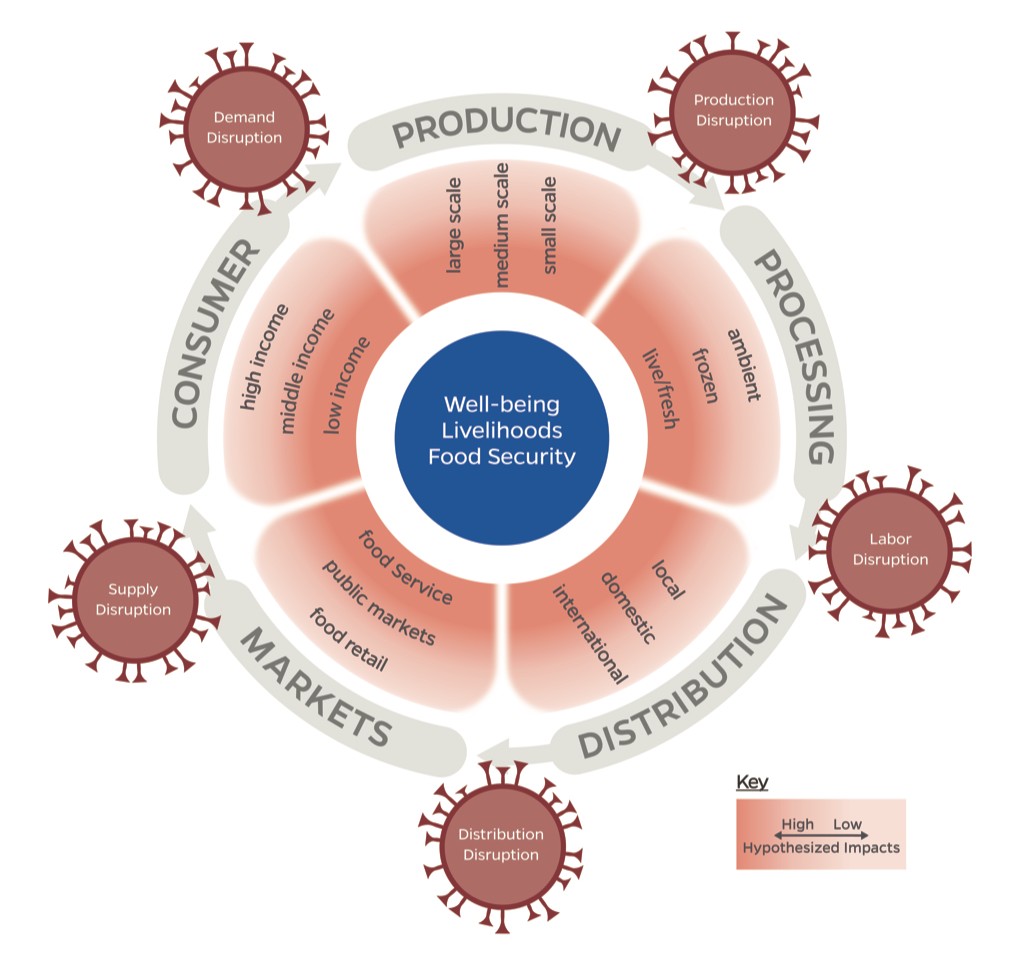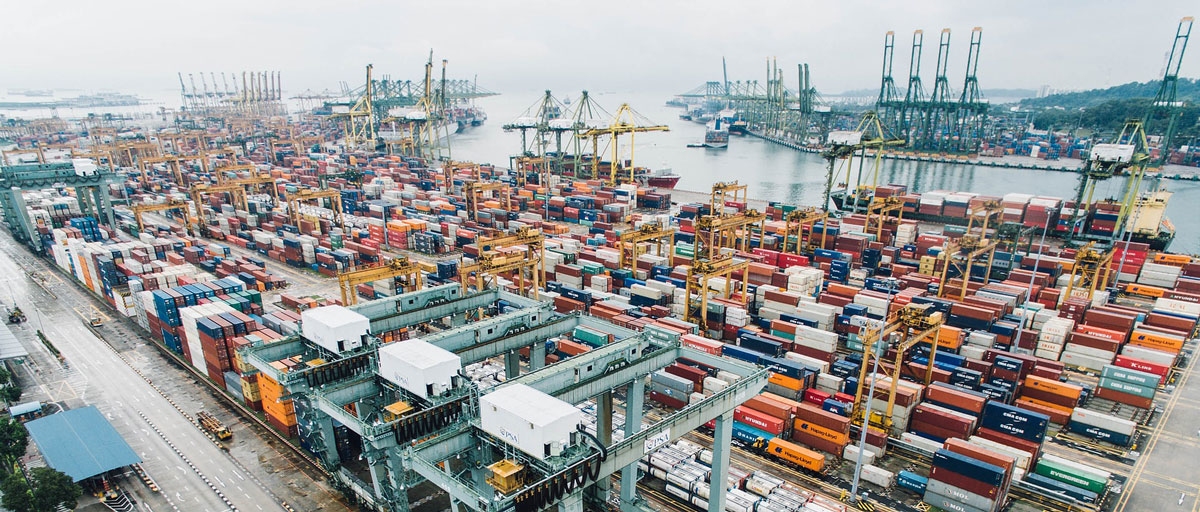Bildtext får vara max två rader text. Hela texten ska högerjusteras om den bara ska innehålla fotobyline! Photo: B. Christensen/Azote
SEAFOOD
COVID-19’s impact on the seafood industry
- Hundreds of millions of people rely on seafood for their livelihood and nutrition
- Support has centred around protection, support and maintenance
- Lessons from the past include avoid trade bans and overfishing
The pandemic is hitting the seafood industry hard. How can past crises help it survive this one?
LEARN AND ADAPT: The COVID-19 pandemic is a crisis in itself for the already vulnerable seafood industry. Hundreds of millions of people rely on seafood for their livelihood and nutrition.
In a study submitted to Global Food Systems and now published as a pre-publication in SOC ARXIV, centre researcher Max Troell joins David Love from Johns Hopkins University and other international colleagues in an analysis of how the seafood sector is coping with disruptions in production, demand, distribution and employment.
Much can be learned from crises such as COVID-19 and how the seafood sector responds to them.
Max Troell, co-author
Three areas of early action
To date, support from governments, development partners, commercial actors and consumers has mostly centred around three things:
- Protect the health of seafood sector workers
- Support and protect jobs and enterprises affected by the pandemic
- Maintain seafood supplies to consumers
Most government actions have focused on dealing with the immediate challenges posed by the crisis. For example, seafood workers in Russia, Canada and South Africa were quickly labelled “essential workers” in order to maintain food supply.
Large-scale commercial actors have sought to secure production and supply chains. It has also strengthened its position in retail and online markets, where consumer demand has been high.
Small-scale fish worker networks, particularly in low-to-middle income countries have shared information, document impacts and pushed for government support. Some NGOs have looked to connect local fishers with private households to sell catches that would otherwise go unsold.
Consumer action differs from high and low-income countries. Consumers in latter have shifted towards staple food rather than nutrient dense food while people in high-income countries have bought seafood products with longer shelf life and frozen products.

COVID-19 disruptions and impacts on seafood supply chain. Click on illustration to access scientific publication
Lessons from the past
What can be learned from previous crises? According to the authors, there are three main lessons:
- Avoid trade bans and hoarding behaviour. This happened during the 2008 grain crisis. Instead, maintain food supply buffers and cooperate internationally
- Avoid overfishing that can harm fish populations and the environment. This happened in Europe after WWII and in Sri Lanka after the 2004 tsunami.
- Make sure prices on staple food remains low so that families in low-income countries such as Bangladesh can free up money to still buy fish and other pricier foods.
“This pandemic has revealed both vulnerabilities and opportunities that the seafood industry should use to create strategies for future shocks,” says Max Troell.
“Much can be learned from crises such as COVID-19 and how the seafood sector responds to them.”
Podcast: The role of food in the pandemic: food security, shocks and transformations
Love, D., Allison, E.H., Asche, F. Belton, B., et.al. 2020. Emerging COVID-19 impacts, responses, and lessons for building resilience in the seafood system. SocArXiv. June 27. doi:10.31235/osf.io/x8aew.
For more information about the study, contact co-author Max Troell:
.jpg)








